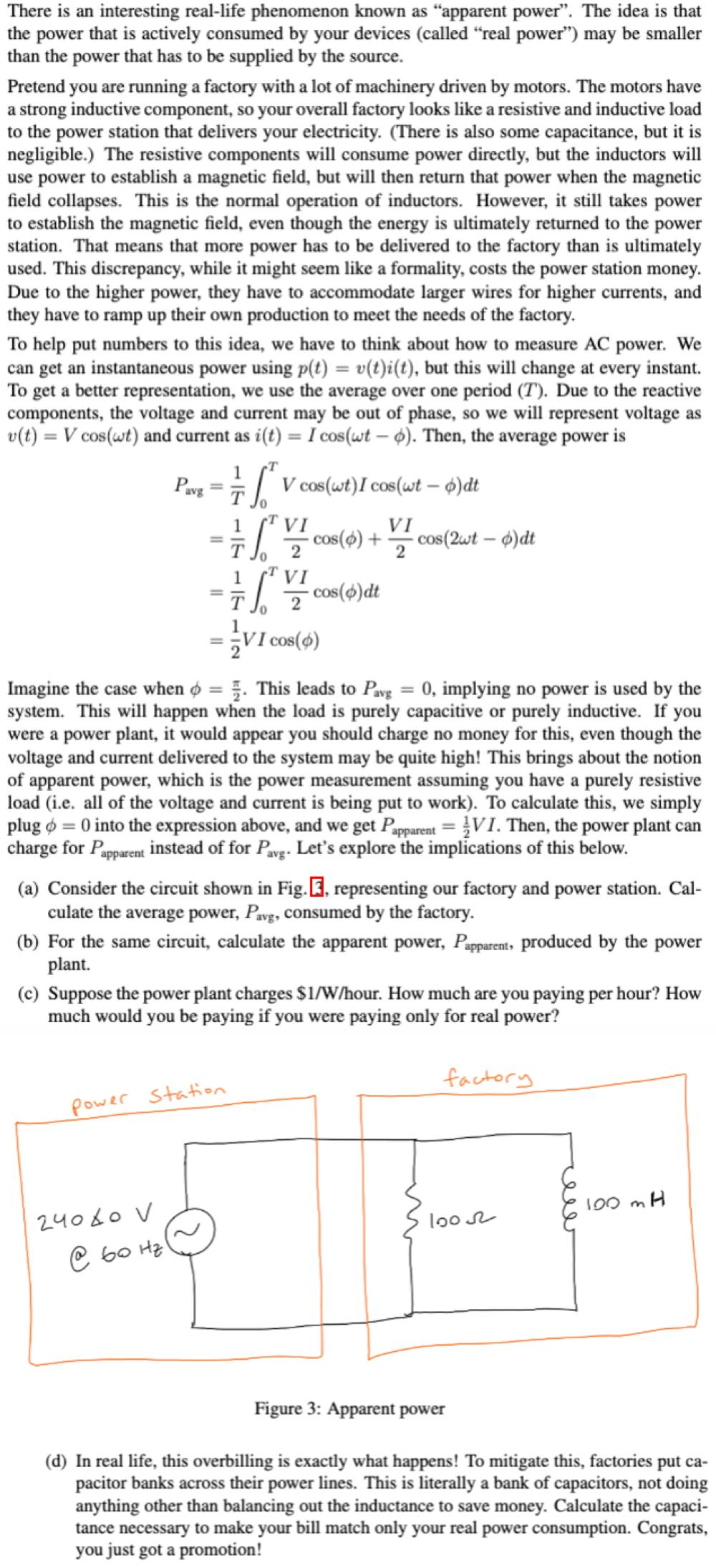Answered step by step
Verified Expert Solution
Question
1 Approved Answer
There is an interesting real-life phenomenon known as apparent power. The idea is that the power that is actively consumed by your devices (called

There is an interesting real-life phenomenon known as "apparent power". The idea is that the power that is actively consumed by your devices (called "real power") may be smaller than the power that has to be supplied by the source. Pretend you are running a factory with a lot of machinery driven by motors. The motors have a strong inductive component, so your overall factory looks like a resistive and inductive load to the power station that delivers your electricity. (There is also some capacitance, but it is negligible.) The resistive components will consume power directly, but the inductors will use power to establish a magnetic field, but will then return that power when the magnetic field collapses. This is the normal operation of inductors. However, it still takes power to establish the magnetic field, even though the energy is ultimately returned to the power station. That means that more power has to be delivered to the factory than is ultimately used. This discrepancy, while it might seem like a formality, costs the power station money. Due to the higher power, they have to accommodate larger wires for higher currents, and they have to ramp up their own production to meet the needs of the factory. To help put numbers to this idea, we have to think about how to measure AC power. We can get an instantaneous power using p(t) = v(t)i(t), but this will change at every instant. To get a better representation, we use the average over one period (T). Due to the reactive components, the voltage and current may be out of phase, so we will represent voltage as v(t) = V cos(wt) and current as i(t) = I cos(wt). Then, the average power is V cos(wt)I cos(wt)dt Pavg 1 2 TV cos(0) + VI cos(2wt-)dt 2 = VI * - cos(o)dt VI cos(6) Imagine the case when = . This leads to Pavg = 0, implying no power is used by the system. This will happen when the load is purely capacitive or purely inductive. If you were a power plant, it would appear you should charge no money for this, even though the voltage and current delivered to the system may be quite high! This brings about the notion of apparent power, which is the power measurement assuming you have a purely resistive load (i.e. all of the voltage and current is being put to work). To calculate this, we simply plug = 0 into the expression above, and we get Papparent =VI. Then, the power plant can charge for Papparent instead of for Pavg. Let's explore the implications of this below. (a) Consider the circuit shown in Fig. 3, representing our factory and power station. Cal- culate the average power, Pavg, consumed by the factory. (b) For the same circuit, calculate the apparent power, Papparent, produced by the power plant. (c) Suppose the power plant charges $1/W/hour. How much are you paying per hour? How much would you be paying if you were paying only for real power? Power Station factory 24060 V @ 60 Hz 10052 100 m H Figure 3: Apparent power (d) In real life, this overbilling is exactly what happens! To mitigate this, factories put ca- pacitor banks across their power lines. This is literally a bank of capacitors, not doing anything other than balancing out the inductance to save money. Calculate the capaci- tance necessary to make your bill match only your real power consumption. Congrats, you just got a promotion!
Step by Step Solution
There are 3 Steps involved in it
Step: 1
a Given V240V I100A 90 pure inductance 120 Pavg 12 VI cos ...
Get Instant Access to Expert-Tailored Solutions
See step-by-step solutions with expert insights and AI powered tools for academic success
Step: 2

Step: 3

Ace Your Homework with AI
Get the answers you need in no time with our AI-driven, step-by-step assistance
Get Started


